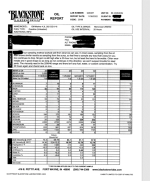Greetings,
For the past decades I have been a "crab" walking on solid earth. Recently bought a boat and have no clue about boating and will need to read everything there is about it =) So be kind to me if asking foolish odd questions. Now the boat I bought have a Volvo Penta V6 4.3 GL engine and a Penta A280 or A290 outdrive. I am planning to drive/sail the boat in saltwater and my question is if I need to saltwater convert it somehow? Is the cooling water pumped in from the outdrive? Can I after each drive connect a hose to freshwater and run the engine clean each time or is it better to have a closed freshwater cooling system?
Cheers to all!
For the past decades I have been a "crab" walking on solid earth. Recently bought a boat and have no clue about boating and will need to read everything there is about it =) So be kind to me if asking foolish odd questions. Now the boat I bought have a Volvo Penta V6 4.3 GL engine and a Penta A280 or A290 outdrive. I am planning to drive/sail the boat in saltwater and my question is if I need to saltwater convert it somehow? Is the cooling water pumped in from the outdrive? Can I after each drive connect a hose to freshwater and run the engine clean each time or is it better to have a closed freshwater cooling system?
Cheers to all!




















